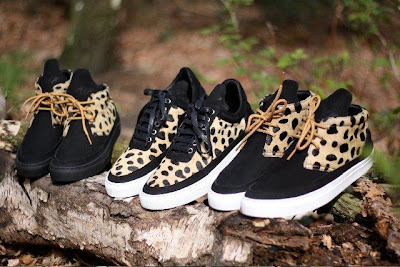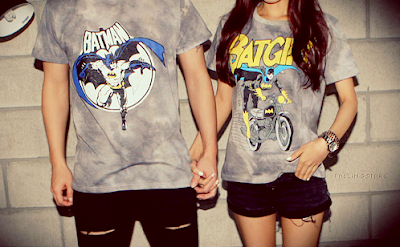Last time we looked at Louis Vuitton and Chanel..now it's time for
Gucci!
Famous for it's red with green colours and lovely bags. When I hear the name Gucci, it remainds me of a girl from the Netherlands, Sylvie van der Vaart. She is a label lover and was in a commerciel where she said Gucci like it's a little baby..but enough about that..here's a story about Gucci
Guccio Gucci (yes that is his real name!)
As an immigrant in
Paris and then London, working in exclusive hotels, young Guccio Gucci (1881–1953) was impressed with the luxurious luggage he saw
sophisticated guests bring with them. Upon returning to his birthplace of
Florence, a city distinguished for high-quality materials and skilled artisans, he established a shop in 1920 that sold fine
leather goods with classic styling. Although Gucci organized his workrooms for
industrial methods of production, he maintained traditional aspects of fabrication. Initially Gucci employed
skilled workers in basic Florentine leather crafts, attentive to finishing. With expansion, machine stitching was a
production method that supported
construction.
Together with three of his
sons, Aldo Gucci, Vasco Gucci and Rodolfo Gucci, Guccio expanded the company to include stores in Milan and
Rome as well as additional shops in Florence. Gucci’s stores featured such finely crafted leather accessories as handbags
, shoes, and his iconic ornamented loafer as well as silks and
knitwear in a signature pattern. The Gucci loafer is the only shoe in the collection of the Museum of Modern Art in
New York.
The company made
handbags of cotton canvas rather than leather during World War II as a result of material shortages. The
canvas, however, was distinguished by a signature double-G symbol combined with prominent red and green
bands. After the war, the Gucci crest, which showed a shield and armored knight surrounded by a ribbon inscribed with the
family name, became synonymous with the city of
Florence.
Aldo and Rodolfo Gucci further expanded the company’s
horizons in 1953 by establishing offices in New York City. Film stars and jet-set travelers to
Italy during the 1950s and 1960s brought their glamour to Florence, turning Gucci’s merchandise into international
status symbols.
Gucci’s distinctive lines made its products among the most frequently
copied in the world in the early 2000s. Waterproof canvas and
satin were used for evening bags. Bamboo was first used to make handbag
handles by a process of heating and molding in 1947, and purses made with a shoulder strap and snaffle-bit
decoration were introduced in 1960.
The original Gucci loafer was updated by a distinctive
snaffle-bit ornament in 1966, while the “Rolls-Royce” luggage set was
introduced in 1970. A particularly iconic touch, introduced in 1964, was the use of the
double-G logo for belt buckles and other accessory decorations.
Rodolfo’s son
Maurizio took over the company’s direction after his father’s death in 1983, and dismissed his uncle Aldo who eventually served a prison term for
tax evasion. Maurizio proved to be an
unsuccessful president; he was compelled to sell the family-owned company to Investcorp, a Bahrain-based company, in 1988. Maurizio disposed of his
remaining stock in 1993. Tragically, Maurizio was
murdered in Milan in 1995, and his former wife, Patrizia Reggiani, was convicted of hiring his killers. Meanwhile, the new investors promoted the American-educated
Domenico De Sole from the position of family attorney to
president of Gucci America in 1994 and chief executive in
1995.
The company had previously brought in Dawn
Mello in 1989 as editor and ready-to-wear designer in order to reestablish its reputation. Well aware of Gucci’s tarnished
image and the value of its name brand, Mello hired
Tom Ford in 1990 to design a ready-to-wear line. He was promoted to the position of creative director in 1994. Before Mello returned to her post as
president of the American retailer Bergdorf
Goodman, she initiated the return of Gucci’s headquarters from the business center of Milan to Florence, where its craft traditions were
rooted. There she and Ford reduced the number of Gucci products from twenty thousand to a more reasonable
five thousand.
There were
seventy-six Gucci stores around the world in 1997, along with numerous licensing agreements. Ford was instrumental in the process of decision-making with
De Sole when the Gucci Group acquired
Yves Saint Laurent Rive Gauche, Bottega Veneta, Boucheron, Sergio Rossi, and, in part-ownership with Stella McCartney,
Alexander McQueen and Balenciaga. By 2001 Ford and De Sole shared the responsibility for major business
decisions, while Ford concurrently directed design at Yves Saint Laurent as well as at
Gucci.
The French conglomerate
Pinault-Printemps-Redoute, however, gained ownership of 60 percent of the Gucci Group’s stock in 2003. Women’s
Wear Daily then announced the departure of both Domenico De Sole and Tom Ford from the Gucci Group when their contracts
expired in April 2004. The
last spring collection under the direction of Ford and De Sole was a critical and commercial success. Amid widespread speculation in the fashion press about Ford’s
heir, the company announced in March 2004 that he would be
replaced by a team of younger designers promoted from the ranks of the company’s
staff.
In 2005, Frida
Giannini was appointed as the creative director for women’s ready-to-wear and accessories, previously joining Gucci in 2002. In 2006, she also
became the creative director for men's ready-to-wear and the entire Gucci
label.
One of the first Gucci stores in Rome
A famous Gucci bag with it's green and red bands
A Gucci bag with bamboo handles
Domenico de Sole, president of Gucci America
Dawn Mello, the woman who hired Tom Ford to Gucci (Thank you!!)
Tom Ford made his first design for Gucci at 1990
Mr. de Sole and Mr. Ford
Creative director Frida Giannini
Hope you learn a lot more about Gucci!
See you next time with Prada..
XO Twenty9


























































